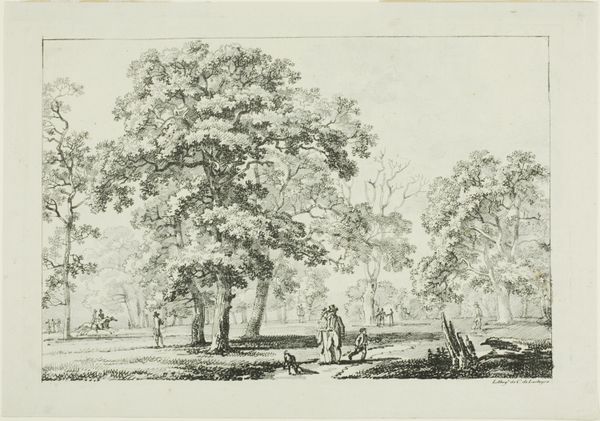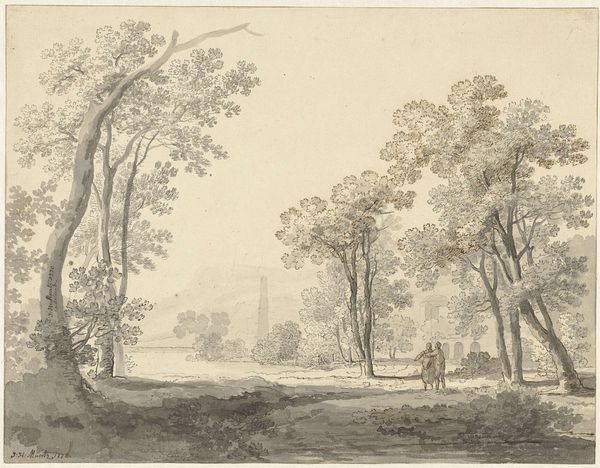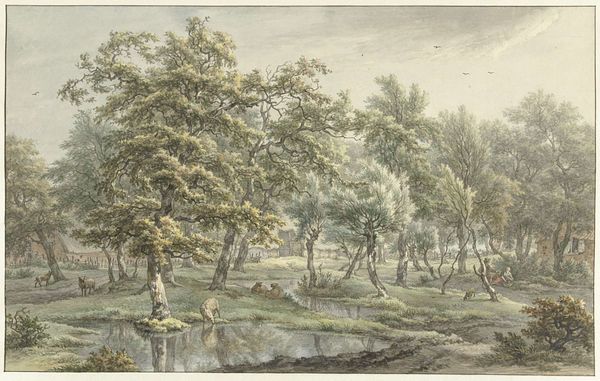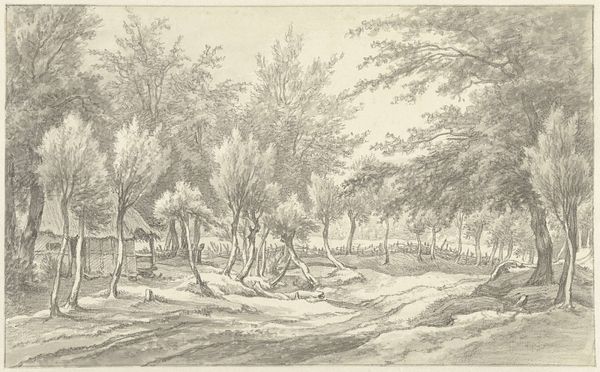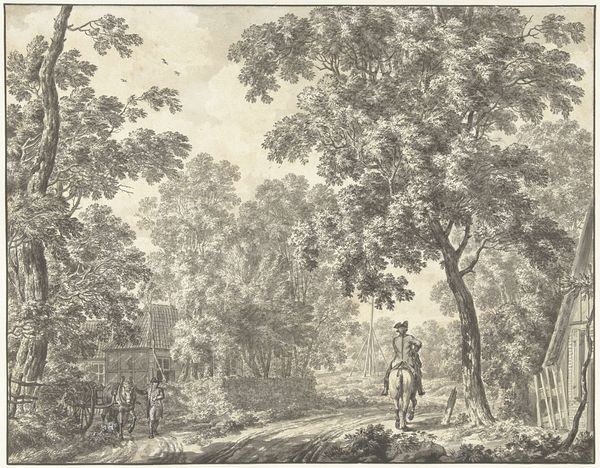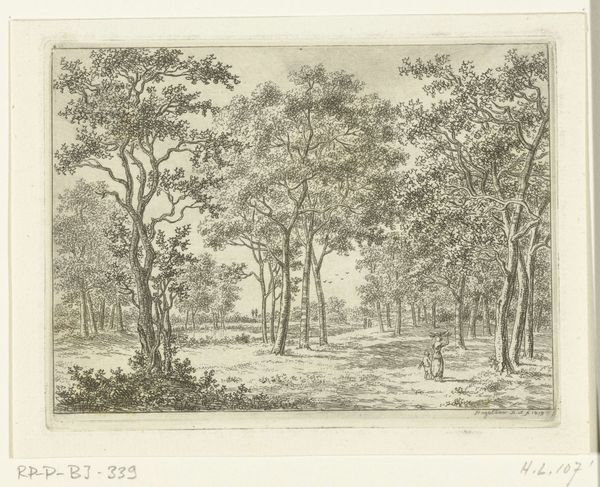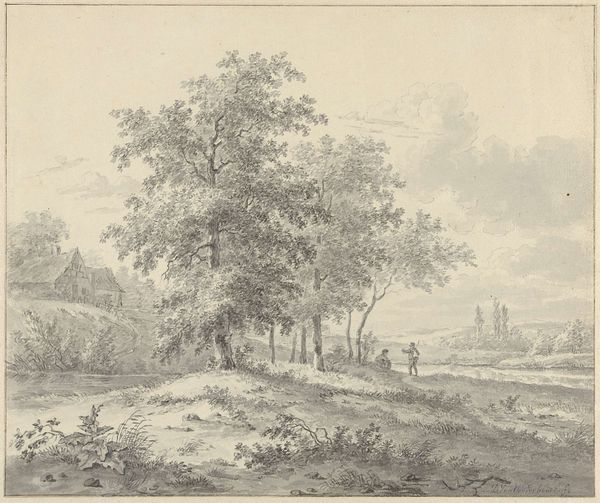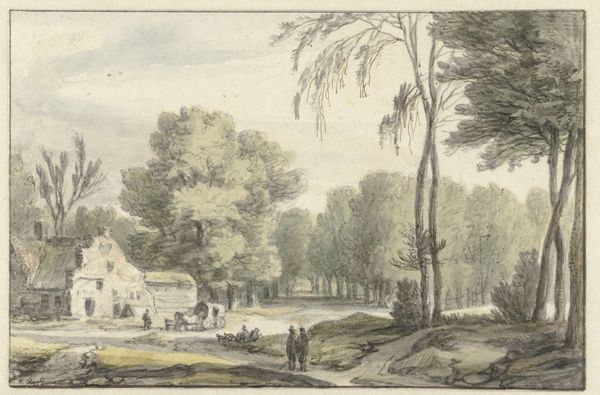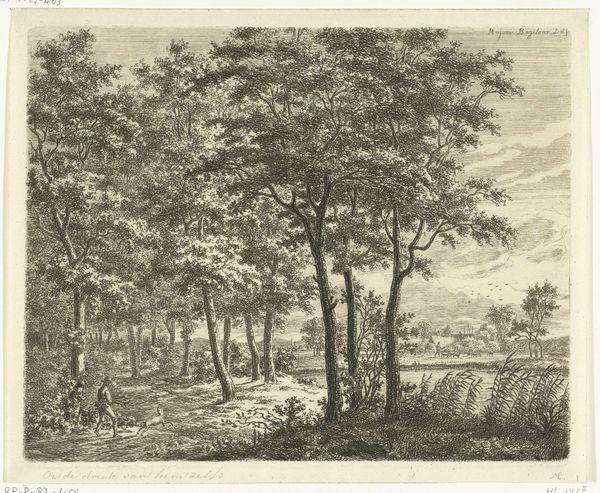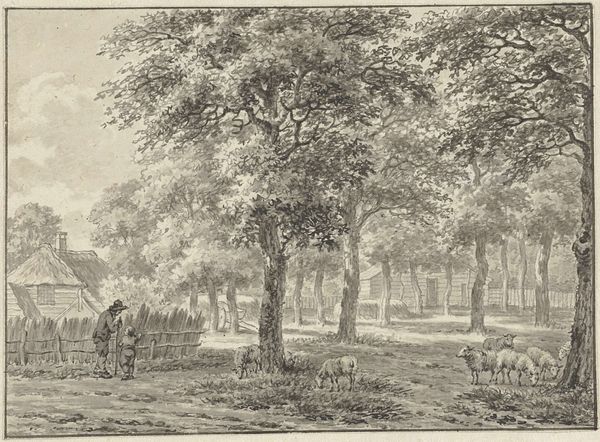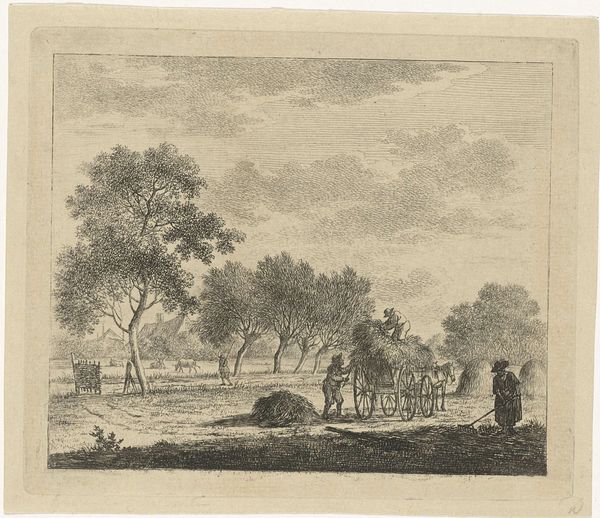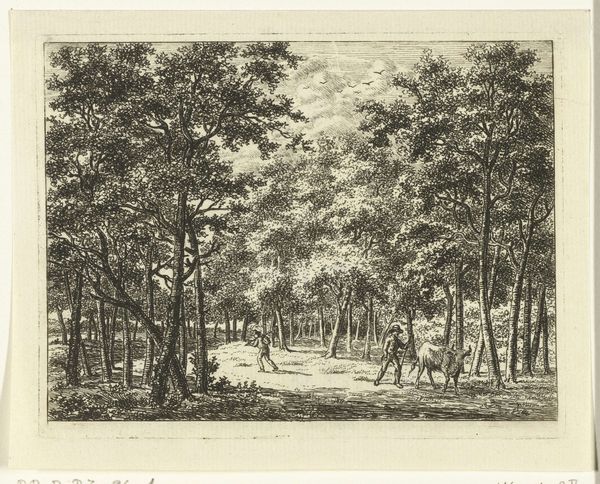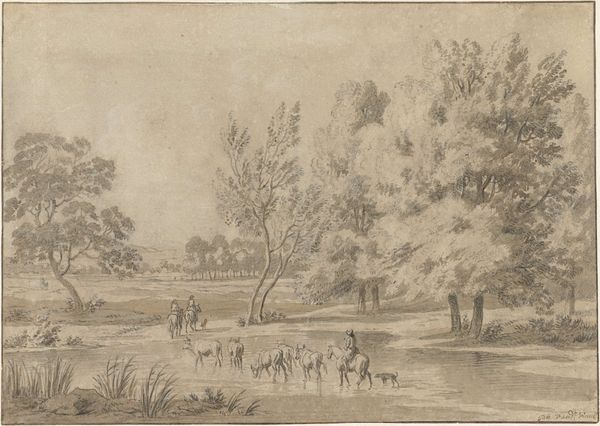
Dimensions: height 209 mm, width 308 mm
Copyright: Rijks Museum: Open Domain
Johannes de Bosch created this pen and brown ink drawing, "Wanderers in a Park in Zeist," around the mid-18th century. The figures are arranged in a cultivated landscape that speaks to the fashion for country estates among the Dutch elite. The carefully planned park reflects a desire to control and order nature, mirroring the social hierarchies of the time. De Bosch’s choice to depict this scene highlights the importance of land ownership and leisure as markers of status. The estates became stages for social performance, and the clothing of the figures walking along the path underlines their privilege. To fully appreciate the artwork, we need to consider the institutional history, political context, and social structures of 18th-century Netherlands. Researching land ownership, estate architecture, and fashion would give us an understanding of the meaning of the park. Art history reminds us that artworks are always embedded in a web of social and historical relations.
Comments
No comments
Be the first to comment and join the conversation on the ultimate creative platform.
